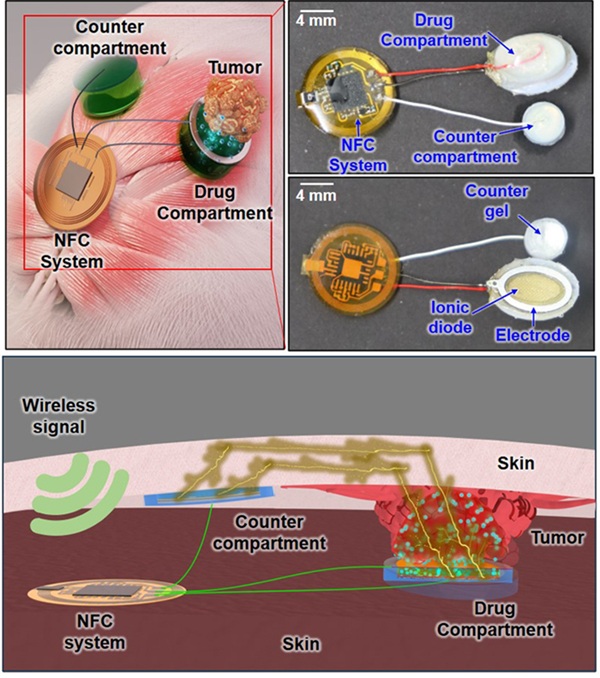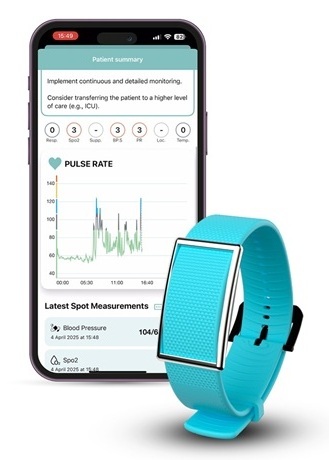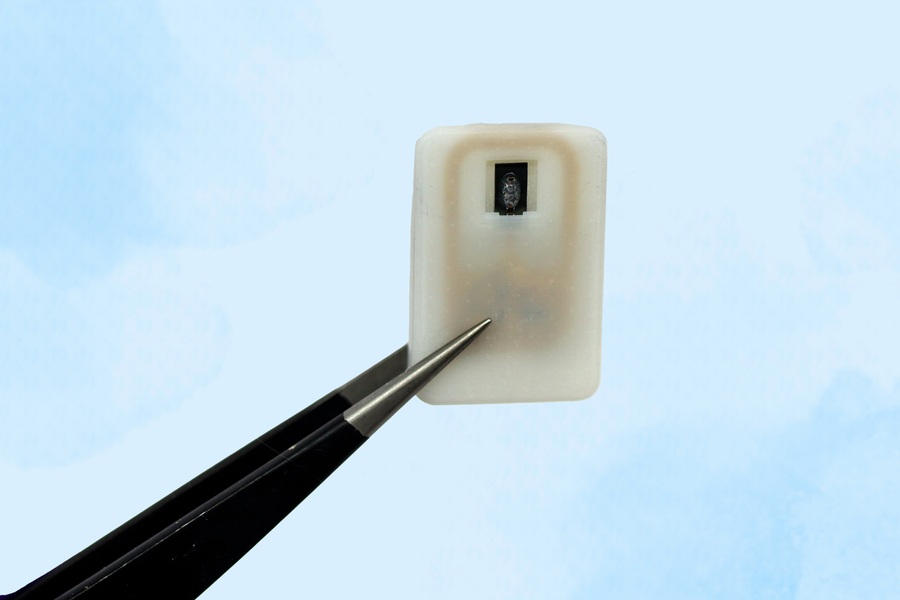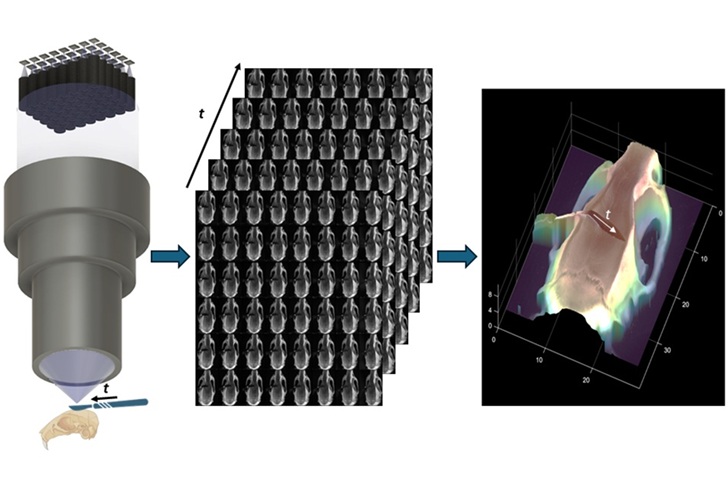Fewer Pathologists and More Cancer Patients Drive Pathology Market
|
By HospiMedica International staff writers Posted on 02 Jan 2018 |
The global digital pathology market was worth USD 381.8 million in 2016 and is projected to grow at a CAGR of 13.2% to reach USD 708.9 million by 2021, driven by the increased adoption of digital pathology solutions worldwide due to shortage of pathologists and rise in new cancer cases. Additionally, new business models and increased FDA approvals of Whole Slide Image (WSI) scanners for primary diagnostics are expected to provide a boost to the digital pathology market.
These are the findings of Frost & Sullivan, a consulting and research firm (Santa Clara, CA, USA).
The declining number of pathologists and increase in procedural volumes due to a rise in the number of oncology cases is expected to be a key growth driver of the digital pathology market. The World Health Organization (WHO) estimates a rise of about 70% in the number of new cases over the next two decades. Digital pathology is known to enhance the productivity of pathologists by 10% to 15%, leading to an improvement in the overall efficiency of healthcare providers. Digital pathology solutions are well suited for oncology care and are useful in cancer diagnosis, as these systems allow physicians to quickly take and consider a second opinion in critical cases. Additionally, the use of digital pathology in drug discovery allows pharmaceutical companies to remove bias and provide quantifiable results.
The growing applications of digital pathology in drug development activities, increasing awareness, and FDA approval for the use of digital pathology systems in clinical applications are expected to further fuel the growth of the digital pathology market. Digital pathology devices were not approved for primary diagnosis until Philips received approval for Intellisite in April 2017, which is likely to drive higher adoption of digital pathology in primary diagnosis. Further approvals of WSIs anticipated over the next 3 to 5 years will lead to increased competition in the digital pathology market.
The share of the software segment in the digital pathology market is estimated to increase on account of an expected increase in spending on image processing and analysis software products. Moreover, increased focus on using machine learning tools and Artificial Intelligence- (AI) based algorithm for automated predictive healthcare solutions will provide a boost to the spending on software solutions.
Since machine learning and AI-based platforms enable useful clinical interpretation of whole slide images, companies are strongly focusing on developing new algorithms and updating their existing ones. Multi-spectral imaging in whole slide scanning also provides a significant growth opportunity as the capabilities to handle multiple staining using multi-spectral imaging systems allow pathologists to more accurately probe the tissue biomarkers. Hence, multi-spectral imaging in whole slide scanning holds significant growth potential due to its high adoption in the clinical segment.
In spite of the higher efficiency and clinical effectiveness of digital pathology solutions, their high cost remains one of the key restraints to market growth, especially among small-to-mid-sized laboratories. However, new business models and partnerships among vendors are expected to change this scenario in the future.
“Strategic partnerships will be essential to pushing market growth. Vendors who provide one or two components for the entire digital pathology portfolio will need to identify the right partner to devise a more robust and complete offering,” said Divyaa Ravishankar, Senior Research Analyst at Frost & Sullivan. “Additionally, vendors should also be able to provide the laboratories with a portfolio of business models.”
Related Links:
Frost & Sullivan
These are the findings of Frost & Sullivan, a consulting and research firm (Santa Clara, CA, USA).
The declining number of pathologists and increase in procedural volumes due to a rise in the number of oncology cases is expected to be a key growth driver of the digital pathology market. The World Health Organization (WHO) estimates a rise of about 70% in the number of new cases over the next two decades. Digital pathology is known to enhance the productivity of pathologists by 10% to 15%, leading to an improvement in the overall efficiency of healthcare providers. Digital pathology solutions are well suited for oncology care and are useful in cancer diagnosis, as these systems allow physicians to quickly take and consider a second opinion in critical cases. Additionally, the use of digital pathology in drug discovery allows pharmaceutical companies to remove bias and provide quantifiable results.
The growing applications of digital pathology in drug development activities, increasing awareness, and FDA approval for the use of digital pathology systems in clinical applications are expected to further fuel the growth of the digital pathology market. Digital pathology devices were not approved for primary diagnosis until Philips received approval for Intellisite in April 2017, which is likely to drive higher adoption of digital pathology in primary diagnosis. Further approvals of WSIs anticipated over the next 3 to 5 years will lead to increased competition in the digital pathology market.
The share of the software segment in the digital pathology market is estimated to increase on account of an expected increase in spending on image processing and analysis software products. Moreover, increased focus on using machine learning tools and Artificial Intelligence- (AI) based algorithm for automated predictive healthcare solutions will provide a boost to the spending on software solutions.
Since machine learning and AI-based platforms enable useful clinical interpretation of whole slide images, companies are strongly focusing on developing new algorithms and updating their existing ones. Multi-spectral imaging in whole slide scanning also provides a significant growth opportunity as the capabilities to handle multiple staining using multi-spectral imaging systems allow pathologists to more accurately probe the tissue biomarkers. Hence, multi-spectral imaging in whole slide scanning holds significant growth potential due to its high adoption in the clinical segment.
In spite of the higher efficiency and clinical effectiveness of digital pathology solutions, their high cost remains one of the key restraints to market growth, especially among small-to-mid-sized laboratories. However, new business models and partnerships among vendors are expected to change this scenario in the future.
“Strategic partnerships will be essential to pushing market growth. Vendors who provide one or two components for the entire digital pathology portfolio will need to identify the right partner to devise a more robust and complete offering,” said Divyaa Ravishankar, Senior Research Analyst at Frost & Sullivan. “Additionally, vendors should also be able to provide the laboratories with a portfolio of business models.”
Related Links:
Frost & Sullivan
Latest AI News
Channels
Critical Care
view channel
Skin-Like Sensor Monitors Vital Signs and Tracks Healing After Surgery
Medical conditions such as bladder control issues and the need for monitoring vital signs after surgery require precise, long-term tracking to improve patient outcomes. These conditions can be challenging... Read more
Wireless Implant Delivers Chemotherapy Deep into Tumors Without Side Effects
Solid tumors, such as those found in cancer patients, present a significant challenge in treatment due to their dense cellular structure and high interstitial pressure. Traditional drug therapies often... Read moreSurgical Techniques
view channel
Fluorescent Imaging Agent ‘Lights Up’ Nerves for Better Visualization During Surgery
Surgical nerve injury is a significant concern in head and neck surgeries, where nerves are at risk of being inadvertently damaged during procedures. Such injuries can lead to complications that may impact... Read more
LED-Based Imaging System Could Transform Cancer Detection in Endoscopy
Gastrointestinal cancers remain one of the most common and challenging forms of cancer to diagnose accurately. Despite the widespread use of endoscopy for screening and diagnosis, the procedure still misses... Read morePatient Care
view channel
Revolutionary Automatic IV-Line Flushing Device to Enhance Infusion Care
More than 80% of in-hospital patients receive intravenous (IV) therapy. Every dose of IV medicine delivered in a small volume (<250 mL) infusion bag should be followed by subsequent flushing to ensure... Read more
VR Training Tool Combats Contamination of Portable Medical Equipment
Healthcare-associated infections (HAIs) impact one in every 31 patients, cause nearly 100,000 deaths each year, and cost USD 28.4 billion in direct medical expenses. Notably, up to 75% of these infections... Read more
Portable Biosensor Platform to Reduce Hospital-Acquired Infections
Approximately 4 million patients in the European Union acquire healthcare-associated infections (HAIs) or nosocomial infections each year, with around 37,000 deaths directly resulting from these infections,... Read moreFirst-Of-Its-Kind Portable Germicidal Light Technology Disinfects High-Touch Clinical Surfaces in Seconds
Reducing healthcare-acquired infections (HAIs) remains a pressing issue within global healthcare systems. In the United States alone, 1.7 million patients contract HAIs annually, leading to approximately... Read moreHealth IT
view channel
Printable Molecule-Selective Nanoparticles Enable Mass Production of Wearable Biosensors
The future of medicine is likely to focus on the personalization of healthcare—understanding exactly what an individual requires and delivering the appropriate combination of nutrients, metabolites, and... Read more
Smartwatches Could Detect Congestive Heart Failure
Diagnosing congestive heart failure (CHF) typically requires expensive and time-consuming imaging techniques like echocardiography, also known as cardiac ultrasound. Previously, detecting CHF by analyzing... Read moreBusiness
view channel
Bayer and Broad Institute Extend Research Collaboration to Develop New Cardiovascular Therapies
A research collaboration will focus on the joint discovery of novel therapeutic approaches based on findings in human genomics research related to cardiovascular diseases. Bayer (Berlin, Germany) and... Read more



















